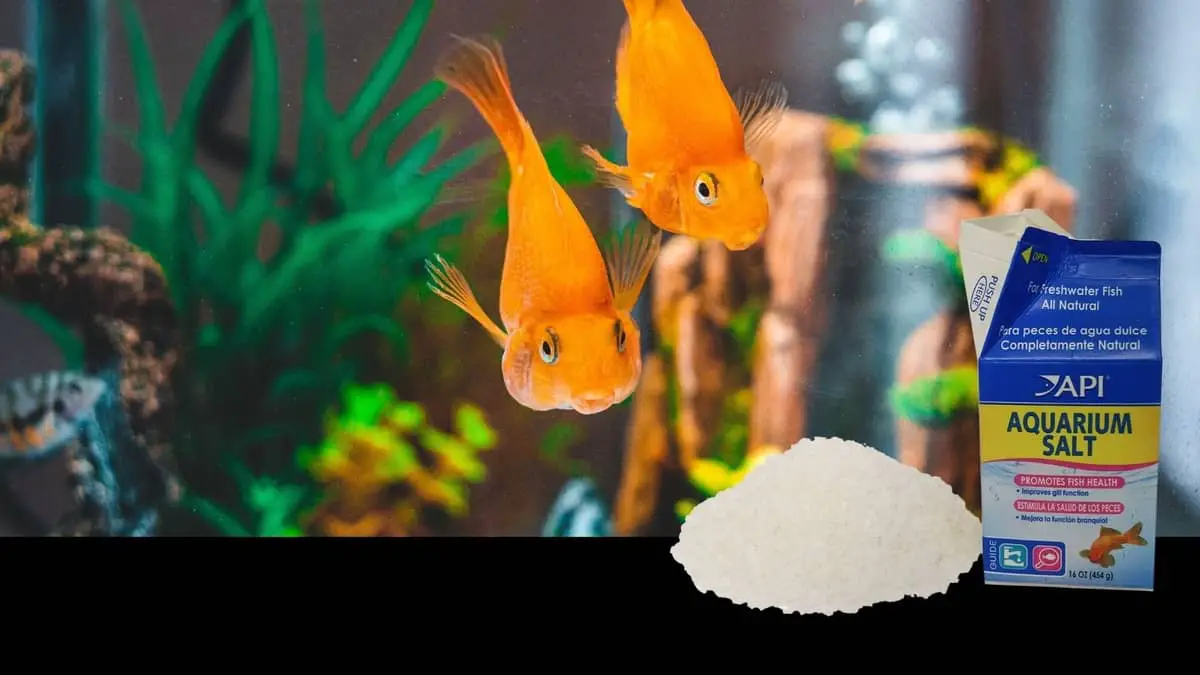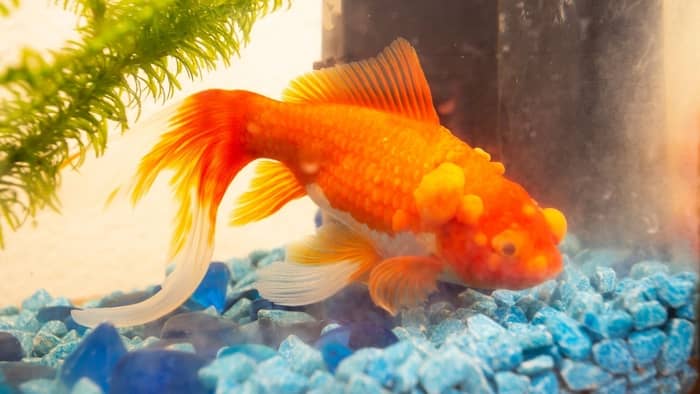Last Updated on January 12, 2022 by admins
Aquarium salt can be a beneficial addition to your fish tank. But, just what is aquarium salt made of? This simple product can be key to a healthy tank environment.
Aquarium salt is a versatile product that many fish owners use. It differs from sea salt, Epsom salt, and table salt. It can bring many beneficial components to your aquarium.
What Is Aquarium Salt Made Of?
Aquarium salt is made of evaporated sea salt. Essentially, it is pure, untreated sodium chloride. Though not everyone agrees with its use, it is added to freshwater aquariums for several different reasons.
It does not include any artificial additives, sugar, or colors. It will not change the pH levels in the water, but it does work to reload natural electrolytes.
Though it may seem odd to add salt to a freshwater tank, it actually has its benefits when done correctly. It can be an easy and affordable way to improve the lives of your fish and help create a healthy environment. Though some people think there are better options, others swear by using it in your aquarium.
Adding aquarium salt to your fish tank eliminates the water from bacteria, fungus, or parasites through osmosis. These organisms are unable to handle salt, where fish are able to withstand the levels needed to eliminate bacteria, fungus, and parasites.
One of the many uses of this versatile product is to promote fish health. It works to improve gill health, allowing for fish to breathe easier. In addition, it can even reduce stress and block the toxic effects of nitrites until a water change.
It can even help heal fish with fungal and bacterial infections. It even helps fight off parasites that may be harmful to fish. In addition, it can also speed up the healing process of fish with wounds.
Unlike other over-the-counter medications, aquarium salt is more affordable. It can also help prevent algae from growing, allowing your tank to thrive. It is even able to help promote a healthy, slimy coat in fish.
Learn more about: How To Get Rid Of Blue-Green Algae In A Planted Aquarium
When To Use Aquarium Salt
Aquarium salt is intended to be used with tropical freshwater fish. You should generally avoid using it with fish that don’t have scales, snails, and in tanks with freshwater plants. Cory catfish and tetras, along with other scaleless species do not tolerate salt well.
It is available at pet stores and online as well. You should not use other salts in place of it without doing research as they may cause adverse effects.
Be sure to carefully add the right amount of it to your fish tank. Though small amounts can be beneficial, too high of levels can cause problems for your fish. Be sure to only use the recommended amounts as needed to ensure the best results.
Baths
Salt baths can provide beneficial treatment for the entire fish tank. They can help treat nitrite poisoning, reduce stress, prevent algae and even treat parasites. Salt baths in a fish tank can be used and maintained for up to three weeks at a time.
For baths, one tablespoon should be used for every five gallons. Making a bath with aquarium salt will not affect the hardness of the water.
Dips
Unlike baths that are meant to treat a whole tank, dips are used on individual fish with ailments. Dips are beneficial for treating fish with parasites, wounds, or infections. They can be a great alternative to more expensive medications.
When making a dip, add one tablespoon of aquarium salt for every gallon of water used. Allow the fish to remain in the salted water for anywhere from five minutes to 30 minutes. You can administer the treatment for up to 30 days if necessary.
Aquarium Salt Vs Sea Salt
Aquarium salt and sea salt have different uses when it comes to using them for fish tank care. While aquarium salt is intended for freshwater fish, sea salt is intended for saltwater fish.
Sea salt is more complex than aquarium salt. It contains components such as sulfates, magnesium, calcium, hydrogen carbonate, bromine, strontium, and potassium. These elements help make the water more suitable for marine invertebrates.
Sea salt is used specifically for aquariums with saltwater marine life. Avoid using sea salt in freshwater tanks to treat ailments in fish. Instead, just stick the aquarium version.
The magnesium in it works as an anti-stress agent and is very important for the nervous system of marine life. The iodine in it supports hormonal balance while the manganese helps the immune system. Iron and copper are vital for the process of hematopoiesis.
Epsom salt can also be of use in fish tanks. You can use it to help treat constipation, Dropsy and swim bladder disease. In addition, it also adjusts the hardness and pH levels of the aquarium and is even safe for most plants.
You should avoid using table salt in your fish tank. Table salt contains iodine, anti-caking agents, and other chemicals that may be harmful to your fish. Though it can be tempting to use since you probably already have it on hand, do not use it instead of aquarium salt.
Learn more about Epsom Salt Aquarium Dosage
The Benefits Of Using Aquarium Salt
Though some experts prefer to avoid aquarium salt as too much can cause problems, it does have many benefits. However, just be sure not to confuse sea salt and aquarium salt for each other.
Aquarium salt can help treat wounds, infections, and parasites in freshwater fish. In addition, it can also improve gill health, reduce stress and even treat nitrite poisoning. It is a more affordable option than most over-the-counter medications and is versatile.
You can administer it into your fish tank by giving dips or baths. Dips are ideal for treating an individual fish whereas baths are for treating a whole aquarium. Be sure to carefully follow the instructions when giving dips or baths to ensure that you do it properly.
Do you have any questions on what is aquarium salt made of? If so, please ask any questions regarding aquarium salt, how to use it and its benefits in the comment section down below.

